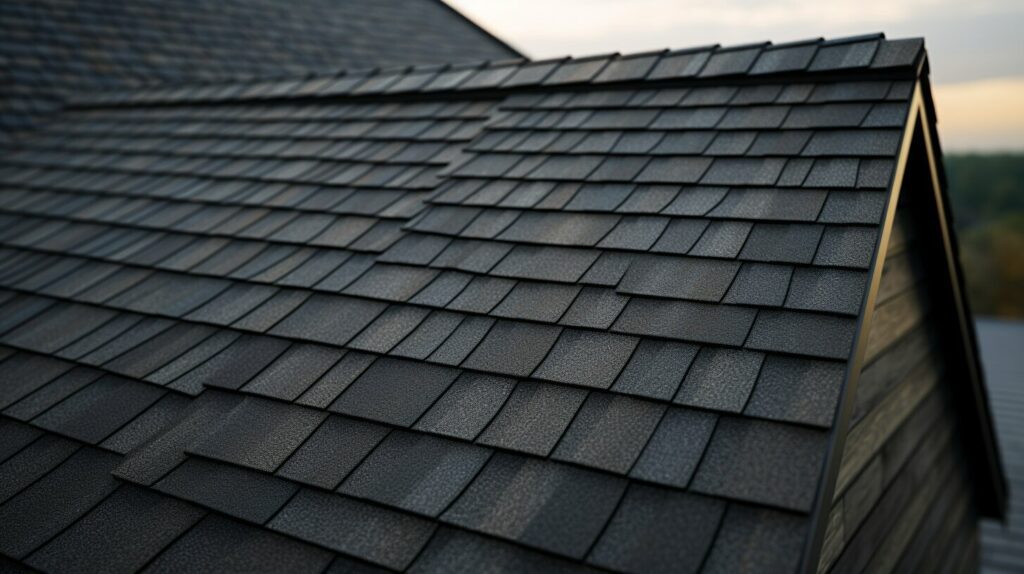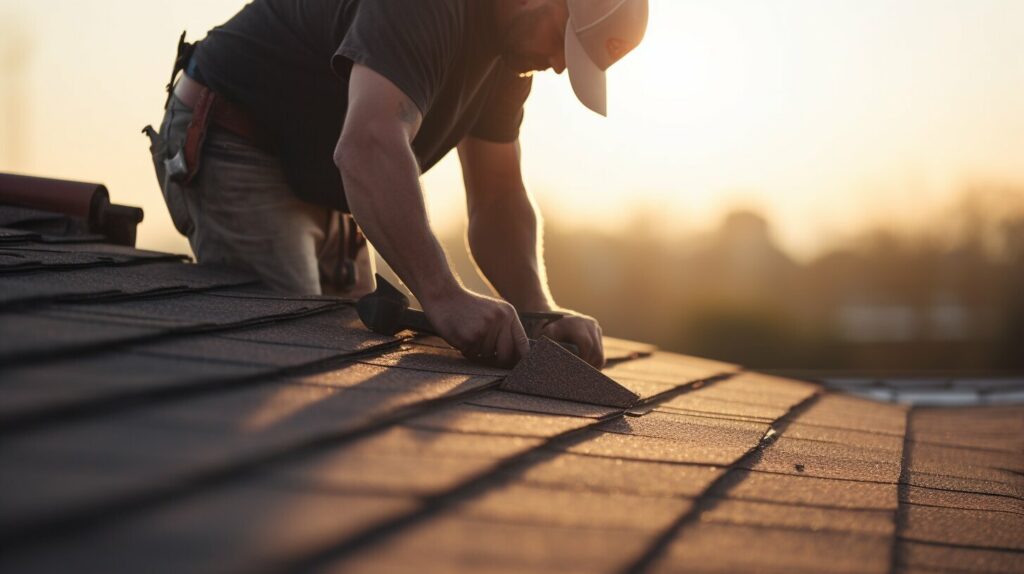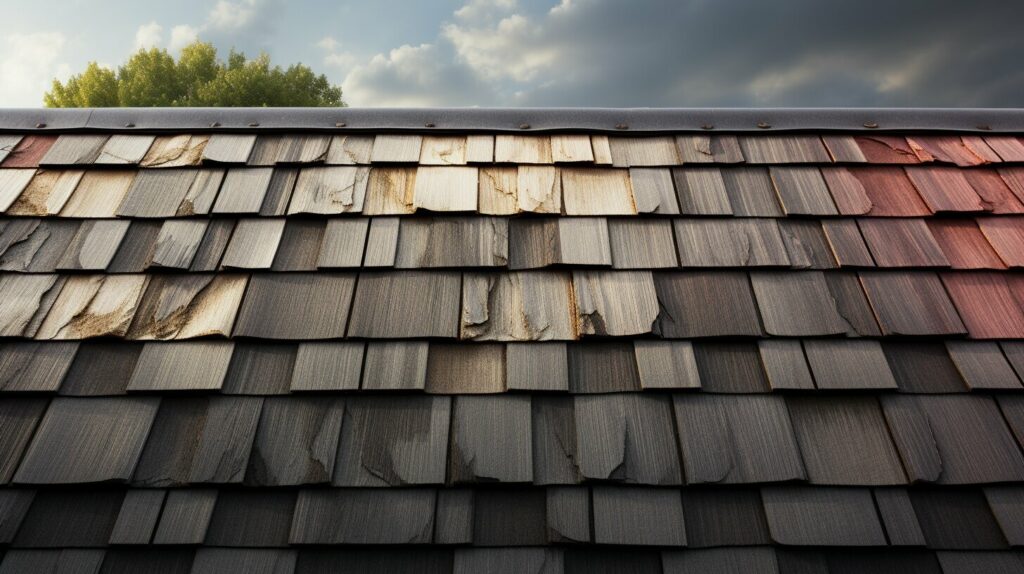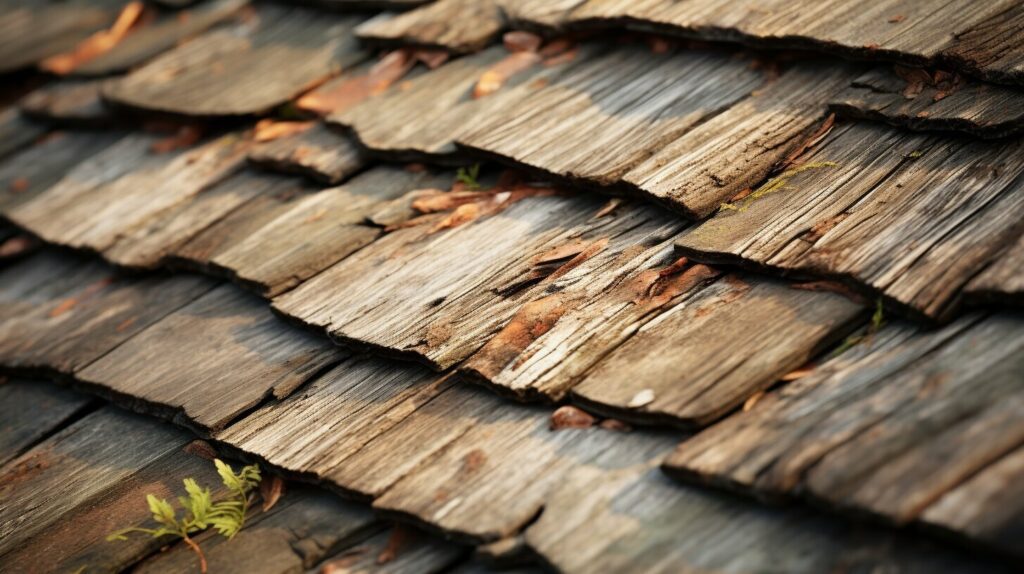If you’re in the market for a new roof, you may have come across the term “50 year shingles.” The promise of a long-lasting roofing material is certainly appealing, but you may be wondering if these shingles really live up to their name. Do 50 year shingles really last 50 years?
The answer, as with many things in life, is not a simple yes or no. While 50 year shingles are designed and marketed as a durable, long-lasting roofing solution, several factors can impact their lifespan.
In this article, we’ll dive into the truth about 50 year shingles and explore the key factors that can affect their durability. From the composition of the shingles to environmental factors and maintenance considerations, we’ll cover everything you need to know to make an informed decision about your roofing options.
Key Takeaways:
- 50 year shingles may not necessarily last 50 years.
- Their lifespan can be affected by several factors, including installation, weather conditions, maintenance, and more.
- Understanding the composition and durability of 50 year shingles can help you make an informed decision about the best roofing material for your home.
Understanding Shingle Lifespan and Durability
When investing in a new roof, it’s important to consider the lifespan and durability of the materials being used. Shingle lifespan can be influenced by various factors, such as the quality of the roofing material, proper installation, maintenance practices, and environmental conditions.
Roofing material durability is a measure of how well the material can withstand wear and tear over time. The durability of 50 year shingles is often touted as a major selling point, but it’s important to understand what that really means.
Shingle lifespan is typically determined by the quality of the materials and the conditions in which they are installed and maintained. Factors such as climate and weather patterns can also play a significant role in determining the lifespan of shingles.
When it comes to the durability of 50 year shingles, it’s important to note that this is a general estimate rather than a guarantee. While some 50 year shingles may last as long as promised, others may not be able to withstand the same conditions and may need to be replaced sooner.
Ultimately, the lifespan and durability of shingles depend on a variety of factors and can vary from one home to another. By understanding these factors, you can make an informed decision when choosing the right roofing material for your home.

When considering shingle lifespan and durability, it’s important to work with a reputable roofing contractor who can guide you through the process. A professional contractor can help you choose the right materials for your home and ensure that they are installed properly to maximize their lifespan. Regular maintenance and upkeep can also help prolong the lifespan of your shingles and keep your roof in good condition for years to come.
What Are 50 Year Shingles Made Of?
When it comes to choosing a long-lasting roofing material for your home, 50 year shingles are a popular option. These shingles are typically made from a combination of materials, including asphalt and fiberglass.
The asphalt used in the shingles helps to provide durability and weather-resistance, while the fiberglass adds strength and stability. The combination of these materials creates a shingle that can withstand harsh weather conditions and maintain its structural integrity over time.
Aside from their composition, 50 year shingles are also a popular residential roofing option due to their longevity. While they may not actually last a full 50 years, they are designed to have a longer lifespan than standard asphalt shingles, which typically last between 15-25 years.

Ultimately, the composition of 50 year shingles and their added durability make them a popular choice for homeowners looking for a roofing material that can withstand the test of time. However, it’s important to keep in mind that proper installation and maintenance are crucial factors in ensuring that your 50 year shingles reach their full potential lifespan.
The Role of Proper Installation
When it comes to maximizing the durability and lifespan of your 50 year shingles, proper installation is key. Even the most high-quality and durable shingles can fail prematurely if they are not installed correctly.
It is important to hire an experienced and reputable roofing contractor who has extensive knowledge and experience working with 50 year shingles. Make sure your contractor follows the manufacturer’s recommended installation instructions and uses the appropriate materials and techniques for your specific roofing system.
Improper installation can not only decrease the lifespan of your shingles but also cause leaks, water damage, and other costly issues down the line. Don’t cut corners when it comes to installation – invest in a professional contractor who will ensure your 50 year shingles are properly installed and will last as intended.

Proper installation is crucial to maximizing the durability and lifespan of your 50 year shingles.
Weather and Environmental Factors
While 50 year shingles are designed to withstand a variety of weather conditions, their lifespan can be impacted by environmental factors such as extreme heat, cold, wind, and rain. In areas with heavy snowfall, the weight of the snow on the roof can also cause damage to shingles.
The type of climate in which you live plays a significant role in the longevity of your shingles. Hotter climates can cause shingles to dry out and crack, while humid climates can lead to mold and mildew growth. Additionally, areas with high levels of air pollution or salt spray from the ocean can cause shingles to deteriorate more quickly.

It’s important to keep these factors in mind when considering the lifespan and durability of 50 year shingles. Regular inspections and maintenance can help identify any issues early on and prevent them from causing further damage.
Maintenance and Upkeep Considerations
Proper maintenance and upkeep are essential for ensuring the longevity of your 50 year shingles. Regular inspections can identify and address any issues before they become major problems. You should inspect your roof at least twice a year, ideally in the spring and fall.

During these inspections, look for signs of wear and tear, such as cracked or missing shingles, or loose debris that may have accumulated in the valleys or gutters. You should also trim back any nearby trees or branches that could cause damage to your roof during high winds or storms.
In addition to regular inspections, there are other important maintenance tasks that you should perform to increase the lifespan of your 50 year shingles. For example, keeping your gutters clean and free of debris can prevent water damage and rot. You should also ensure that your attic is properly ventilated to prevent moisture buildup, which can cause your shingles to deteriorate more quickly.
If you are unsure of how to properly maintain your roof, it is recommended that you hire a professional roofer to perform maintenance and repairs. They can help you identify any issues and ensure that your roof is in good condition.
Real-Life Expectations vs. Manufacturer Claims
When shopping for roofing materials, it’s important to consider the longevity and durability of each option available to you. While 50 year shingles may sound like a reliable choice, it’s important to keep in mind that the length of their lifespan can vary depending on several factors.
First, it’s important to understand that the “50 year” label on these shingles is not a guarantee that they will last for exactly 50 years. It is merely an estimate of how long they could last under ideal conditions. Many homeowners have reported that their 50 year shingles lasted much less than 50 years, while others have had no issues with their shingles after several decades. The truth lies somewhere in between.
One factor that can impact the lifespan of 50 year shingles is the climate in which they are installed. Extreme weather conditions, such as heavy snow or hail, can cause damage to the shingles and shorten their lifespan. Additionally, poor installation or inadequate maintenance can also contribute to premature wear and tear.
It’s important to keep in mind that the manufacturer’s claims should be taken with a grain of salt. While they may provide a helpful estimate, it’s impossible for them to predict every possible scenario that could impact the shingles’ lifespan. It’s important to do your research and read reviews from other homeowners to get a more accurate idea of how long you can realistically expect your 50 year shingles to last.
Ultimately, while 50 year shingles do offer a longer lifespan than traditional asphalt shingles, it’s important to keep in mind that their actual lifespan may vary depending on several factors outside of your control. By understanding these factors and taking steps to properly maintain your roof, you can help ensure that your 50 year shingles last as long as possible.

Alternative Long-Lasting Roofing Materials
If you’re considering 50 year shingles for their durability, it’s worth exploring other long-lasting roofing materials that may be a better fit for your needs.
One option is metal roofing, which can last up to 70 years with proper maintenance. Metal roofs are also energy efficient, reflecting sunlight to keep your home cooler and reducing energy costs.
Another durable option is slate roofing, which can last up to a century. While slate is an expensive material, its unique appearance and long lifespan may make it worth the investment.
If you prefer the look of traditional shingles, consider upgrading to architectural shingles, which can offer a longer lifespan than standard asphalt shingles. They are thicker and have a more textured appearance, mimicking the look of higher-end materials like slate or cedar.

Ultimately, the best choice for your home will depend on your budget, personal style, and the climate in which you live. Consider consulting with a professional roofing contractor to help you decide which material is right for you.
Factors That Can Impact Shingle Lifespan
While 50 year shingles are designed to last for several decades, there are several factors that can impact their lifespan. Here are some important things to keep in mind:
- Maintenance: Proper maintenance is key to ensuring that your shingles last as long as possible. Neglecting to repair damaged shingles or address issues like moss growth can shorten their lifespan.
- Climate: The weather in your area can also play a role in how long your shingles last. Extreme temperatures, high winds, and heavy rain or snowfall can all take a toll on your roof over time.
- Installation: As we mentioned earlier, proper installation is crucial to the durability of your shingles. If they are not installed correctly, they may not last as long as they should.
- Material quality: The quality of the shingles themselves can also impact their lifespan. Not all 50 year shingles are created equal, so it’s important to choose a reputable brand and ensure that the materials used are high-quality.
Overall, while 50 year shingles are among the longest-lasting roofing materials available, there are still many factors that can impact their lifespan. By taking proper care of your roof and addressing issues as they arise, you can help ensure that your shingles last as long as possible.

When to Consider Replacing 50 Year Shingles
If you’ve installed 50 year shingles on your roof, you’re likely wondering if they’ll truly last the full 50 years. While they can certainly last a long time, there are several factors that can impact their lifespan, including weather, maintenance, and proper installation.
So, how do you know when it’s time to consider replacing your 50 year shingles? The answer ultimately depends on their condition and age.
One thing to consider is the age of your shingles. Even if they haven’t reached the 50 year mark, if they are approaching 30 years old, it’s a good idea to have a professional inspect them for any signs of wear and tear. This can include curling or cracking of the shingles, as well as granule loss.
Another factor to consider is weather. If your area is prone to severe weather conditions such as hail, heavy rain, or high winds, your shingles may experience damage that could lead to a shorter lifespan. It’s important to have your roof inspected after any major weather events to ensure your shingles are still in good condition.
Maintenance and upkeep is also crucial in extending the life of your 50 year shingles. Regular cleaning and inspections can help identify any issues early on and prevent further damage. If you neglect maintenance, your shingles could deteriorate faster and require replacement sooner.
If you’re unsure about the condition of your 50 year shingles, it’s always best to have a professional inspection. They can assess the condition of your shingles and recommend any necessary repairs or replacements.

Ultimately, while 50 year shingles can last a long time, their lifespan will depend on several factors. By staying on top of maintenance and having your roof inspected regularly, you can help ensure that your shingles last as long as possible. But if your shingles are approaching 30 years old or showing signs of damage, it may be time to consider replacing them to protect your home and ensure the longevity of your roof.
Conclusion
So, do 50 year shingles really last 50 years? The answer is not a straightforward yes or no. While 50 year shingles are designed to be durable and long-lasting, the actual lifespan depends on several factors, including weather conditions, installation quality, and maintenance practices.
Proper installation and regular maintenance can help to maximize the lifespan of your 50 year shingles, but environmental factors like extreme temperatures, precipitation, and wind can still take a toll on your roofing material. While some homeowners may achieve the full 50 years of promised longevity from their shingles, others may need to consider replacement earlier based on the condition and age of their shingles.
It’s important to also note that there are alternative long-lasting roofing materials available, such as metal or tile, that may provide a similar lifespan to 50 year shingles. Ultimately, choosing the best roofing material for your home will depend on several factors, including your budget, personal preference, and local weather patterns.
In conclusion, while 50 year shingles can provide a durable and long-lasting roofing option, it’s important to understand that the promised longevity is not a guarantee. Proper installation, regular maintenance, and consideration of environmental factors can all impact the lifespan of your roofing material. It’s best to consult with a professional roofing contractor to determine the best option for your home and ensure that your roof lasts as long as possible.
FAQ
Q: Do 50 year shingles really last 50 years?
A: Yes, 50 year shingles are designed to last for several decades with proper installation and regular maintenance. However, the actual lifespan can be influenced by various factors.
Q: What factors contribute to the durability of 50 year shingles?
A: The durability of 50 year shingles is influenced by factors such as the quality of materials used, proper installation techniques, weather conditions, and regular maintenance.
Q: What are 50 year shingles made of?
A: 50 year shingles are typically made of asphalt or fiberglass, which provides strength and durability. They may also have additional layers for added protection against weather elements.
Q: How does proper installation affect the lifespan of 50 year shingles?
A: Proper installation is crucial in maximizing the durability and lifespan of 50 year shingles. It ensures that the shingles are securely fastened and can withstand various weather conditions.
Q: How do weather and environmental factors impact the longevity of 50 year shingles?
A: Weather conditions such as extreme heat, cold, wind, and moisture can affect the lifespan of 50 year shingles. Additionally, environmental factors like pollution and nearby trees can also contribute to wear and tear.
Q: What maintenance and upkeep considerations are important for 50 year shingles?
A: Regular maintenance, including cleaning debris, inspecting for damage, and repairing any issues promptly, is essential to ensure the longevity of 50 year shingles. Following manufacturer guidelines for maintenance is also recommended.
Q: What is the difference between real-life expectations and manufacturer claims for 50 year shingles?
A: While manufacturers advertise 50 year shingles, the actual lifespan can be influenced by various factors. It is important for homeowners to have realistic expectations and understand that environmental conditions and maintenance practices can impact the longevity.
Q: Are there alternative long-lasting roofing materials to consider?
A: Yes, there are other roofing materials available that offer similar durability and lifespan to 50 year shingles. Examples include metal roofing, slate tiles, and certain types of clay or concrete tiles.
Q: What additional factors can impact the lifespan of 50 year shingles?
A: Factors such as regular maintenance practices, climate, and exposure to environmental elements can impact the lifespan of 50 year shingles. Proper care and consideration of these factors can help maximize their durability.
Q: When should homeowners consider replacing 50 year shingles?
A: Homeowners should consider replacing 50 year shingles when they show signs of significant damage, such as cracks, curling, missing pieces, or excessive granule loss. Additionally, the age of the shingles should also be taken into account.